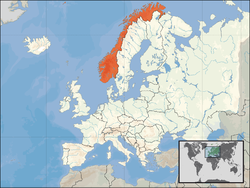(November 7, 2007), the Federal Circuit held that the following statement was only a partial incorporation by reference of less than the entire reference, regardless of factual findings to the contrary by the lower court:
The '319 patent sets forth the chain of copending applications back to the '373 patent; the specification of the '319 patent stating, in the "Cross-Reference to Related Applications":
This application is a continuation of Ser. No. 09/507,438, filed Feb. 19, 2000 issued as U.S. Pat. No. 6,294,039; which is a division of Ser. No. 09/258,999, filed Fed. 26, 1999, issued as U.S. Pat. No. 6,042,677; which is a division of Ser. No. 08/896,517, filed Jun. 16, 1997, issued as U.S. Pat. No. 5,910,250; which is a continuation-in-part application of Ser. No. 08/690,045, filed Jul. 31, 1996, issued as U.S. Pat. No. 5,783,083 which is a non-provisional of provisional application Ser. No. 60/012,921 filed Mar. 5, 1996 and a continuation-in-part of Ser. No. 08/514,119, filed Aug. 11, 1995, issued as U.S. Pat. No. 5,639,373. The disclosure of all the patents and applications listed above are hereby incorporated by reference thereto as if fully set forth herein.
'319 patent, col. 1, lines 8-21. The intervening '250 patent contains the specific incorporation by reference clause here at issue:
The vertical skein is not the subject matter of this invention and any prior art vertical skein may be used. Further details relating to the
construction and deployment of a most preferred skein are found in the parent U.S. Pat. No. 5,639,373, and in Ser. No. 08/690,045, the relevant disclosures of each of which are included by reference thereto as if fully set forth herein.
'250 patent, col. 2, lines 30-36. The district court concentrated on the "construction and deployment" portion of this clause, in response to the defendant's argument that continuity of disclosure was lost by that clause of the '250 patent.
. . . Contrary to the findings of fact of the district court, the panel majority finds that the incorporation clause in the '250 patent, supra, broke the continuity of disclosure.
This defense was presented to the district court, the defendant arguing that it was not sufficiently clear whether the words of incorporation embraced all of the elements of the grandparent '373 patent and the grandchild '319 patent, and particularly the gas distribution through the skein. The district court held an evidentiary hearing to determine what a person of ordinary skill in the field of the invention would understand from the clause incorporating the "details relating to the construction and deployment of a most preferred skein. . . ."
The question of what material would be understood as incorporated is a question of fact, on which the district court made extensive findings . . . .
The district court referred to the burden of proof, as the court found that continuity of disclosure was preserved from the '373 patent to the '319 patent:
[A]lthough not plaintiff's burden, the Court finds the incorporations by reference are fully informative to a person of ordinary skill, and that they permit the transfer of all disclosures of the '373 patent which cover claim 7 of the '319 patent to flow through all intermediary patents to the '319. [Id. at 5.]
The court also observed that the incorporation was reviewed by the patent examiner. This administrative finding carries the deference required by the Administrative Procedure Act. See Dickinson v. Zurko, 527 U.S. 150, 152 (1999). My colleagues ignore the administrative findings, as they ignore the district court.
. . . The panel majority does not review the district court's findings, and instead announces that this is a matter of "law." However, the question of what would be "reasonably conveyed to a person skilled in the relevant art," is a classical question of fact. Bilstad v. Wakalopulos, 386 F.3d 1116, 1126 (Fed. Cir. 2004).
My colleagues also criticize the specificity of the incorporation clause in the '250 patent. However, this clause is not distinguishable in specificity from that ratified in Cook Biotech, Inc. v. Acell, Inc., 460 F.3d 1365 (Fed. Cir. 2006), where the incorporation clause was as follows:
The preparation of UBS from a segment of urinary bladder is similar to the procedure for preparing intestinal submucosa detailed in U.S. Patent No. 4,902,508 the disclosure of which is expressly incorporated herein by reference. Id. at 1376.
The only difference in the specificity of the incorporation in the '250 patent, and the traditional incorporation text, is the uncertainty brought by the court to this routine practice. Incorporation by reference is a routine expedient of patent drafting. The district court's finding that a person of ordinary skill in the field of the invention would understand what is included in the incorporated subject matter, ends the inquiry.
. . . The panel majority's holding casts doubt on the reliable use of this expedient, lest an earlier patent become an invalidating reference against its successors in the chain of filings. The majority's rejection of the factual foundations of incorporation by reference and creation of a new area of de novo appellate authority, raise new risks of patent drafting. The apparent requirement that all subject matter must be reproduced in all continuing applications adds nothing to the knowledge disclosed to the public, adds nothing to the information provided to the patent examiner, and adds nothing to compliance with 35 U.S.C. '120; it simply adds costs and pitfalls to inventors, as they attempt to walk new judicial tightropes.







